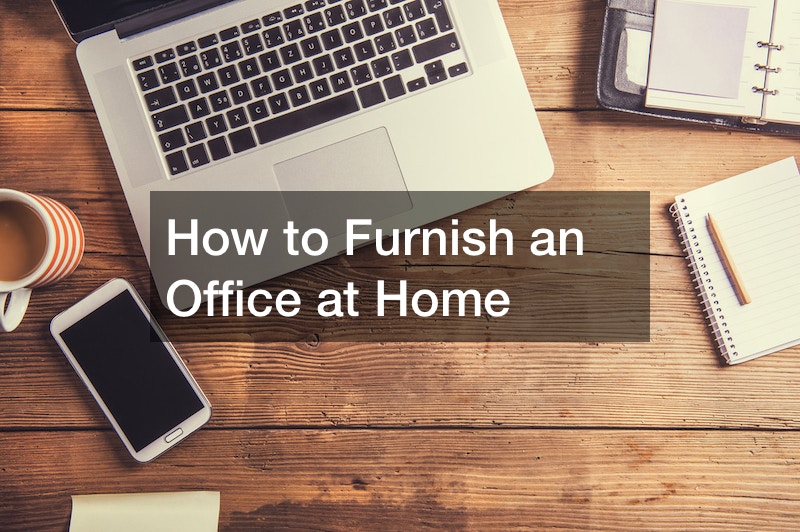
Home offices used to be a thing. Then they were not. Now home offices are gaining popularity again. In the 19th and 20th centuries, home offices were pretty common. If you were a painter, you didn’t need a studio room in the city. If you had a sewing business, your home was likely the headquarters. With the advent of automobiles and mass transit, people aren’t bound to work and live in the same geographical area. Today, many people work in the city’s center and live far off in the outskirts.
Up until COVID-19 hit, there was a significant increase in the number of people working from home. According to a report in the Economist, Americans spent an average of 5% of their working time at home before the pandemic. By the end of 2020, that figure had risen to 60%. While the number may decrease as the pandemic threat wanes, home offices have a redefined meaning.
If you’ve been planning to set up a home office, there couldn’t be a better time. However, your home office needs to look and feel the part for enhanced productivity. In this article, you’ll learn how to furnish an office at home (like a commercial office) and common mistakes to avoid.
Why You Should Consider Having a Home Office

Having a home office has multiple benefits for you and your loved ones. Furnishing it to your specification will add another usable space to your home. If you’re still hesitant to spend significant resources setting up a home office, here are some reasons to motivate it that it is worth it.
1. A Home Office Increases Convenience and Flexibility
Think about it; you have an international client who needs to go through some statements. It’s 9:00 pm at your home. Which is easier? Driving to your office or sneaking to your home office in your pajamas and a hot coffee? The home office wins. With a home office, you can tune your work hours to your preferences. If you’re a morning owl, hop in behind the desk at 5:00 am.
2. Reduced Expenses
Sometimes, renting office space in commercial set-ups can be quite expensive. The utility bills and rental fees are enough to dent your profit. With a home office, you can skip rental fees, regulate your bills and pay lower taxes. You’ll also save on the cost of looking fancy. For most people, extra expenses in getting an office go to signs, high-end guest seats, and the latest TVs in a bid to match the best. Yet, good impressions might not last long in business; but good quality does.
3. Increased Family Time
While having a home office doesn’t mean you’ll always work from home, it will likely increase how frequently you work. A home office also doesn’t mean an end to childcare, but you’ll be more available. You can easily check on your children during coffee breaks. Your committed hours are greatly reduced with a home office; thus, you can use that time to socialize with your family. In addition, the mere knowledge that your family is safe and okay is sometimes the only assurance you need.
4. Freedom to Customize Space

With commercial offices, your choice of customization is pretty limited. Maybe you’d prefer a complete Zen office with floor pillows instead of a heavy mahogany desk. Or maybe you prefer an epoxy floor coating over painted cement. With a home office, you can customize every inch to your satisfaction. You can even learn how to furnish an office at home and work with a consultant.
5. Increased Self-Discipline
Commercial offices have some aspects that make discipline easier. Your mind can be quite productive when everyone seems busy. However, having a home office is the ultimate test of self-discipline. The ability to concentrate for blocks when you could be enjoying banter with your family is true discipline.
6. It’s More Environment-Friendly
According to Grist’s report, carbon emissions by car were down by 35% during lockdowns, while those from planes were down by 60%. Since the home office is within the compound and with less commuting, you’ll contribute to the reduction of carbon emissions. Additionally, you have a leeway to adopt strategies to lower energy consumption than you would use in a conventional office, meaning lower bills.
10 Tips on Home Office Furnishing
Furnishing a home office might be similar to furnishing any office. However, you have more control over how furnishing is done in your home office than you would in a commercial space. Here are ten tips to remember on how to furnish an office at home.
1. Invest in High-Quality Office Furniture
The furniture retail industry has experienced a boost after more people moved their offices to homes. According to Statista, in 2019, the retail sales of home office seating in the U.S. were $1.9 billion. Yet, choosing high-quality furniture for a home office remains a common factor people overlook when setting up.
If you want to make your office space a lively and professional space that serves you for a long time, invest in high-quality furniture from a trustworthy office furniture store. While it’s tempting, don’t pick the plastic chair from your garage or your campus desk. Shop for a chair that improves functionality while being aesthetically pleasing.
2. Choose a Location with Minimal Distractions
One of the fears you may have of moving your office to your home is about distractions. Sure, commercial offices have their types of distractions, from loud TVs to chatty colleagues, but homes are not distraction-proof. Therefore, think hard and strategically about where your home office goes.
If your family spends more time downstairs, you could choose a room upstairs to be your office. You can invest in a quality chair lift to increase mobility and reduce the fatigue of climbing stairs whenever you need something downstairs. Do some soundproofing to minimize noise from the outside.
3. Don’t Forget the Lighting
If you want to learn how to furnish an office at home, you shouldn’t forget lighting. It’s easy to forget lighting in pursuit of functionality. Yet poor lighting will dampen your moods and affect your eyesight negatively. According to Blink Charlotte, harsh fluorescent lights can cause blurry vision.
Contact electrical services early because some lighting designs can be challenging to implement after construction or remodeling. Even better, consider natural lighting. You can have big panel windows that not only give you a view but allow natural light to seep in.
4. Don’t Limit Yourself with One Style
One of the biggest reasons you should learn how to furnish an office at home is because there’re no rules, or at least you can bend them. If you don’t like office beige, paint orange or yellow or make wall art if you like. If you prefer to swing occasionally, set up a swing chair. You’re in charge.
Unless you use your office to hold many meetings, your home office can be a chance for self-expression. You could have a space for inspiration and quiet time if you’re religious. You could even convert old features to serve your needs, for example getting a furnace repair.
5. Follow the Rules of Ergonomics
Organizing your office conventionally is tempting. Yet you can design your space ergonomically so that everything works for you. For example, if you regularly use a printer, it shouldn’t be at the far end of the office where you have to wake up each time you need to print.
Allow yourself to be flexible enough to organize the office to be functional. Working with an expert will help you decide what goes where. They may even have multiple approaches to how to furnish an office at home with ergonomics in mind.
6. Increase Functionality with Organization Tips

Unlike commercial spaces built solely for letting out space, your home has other purposes. Therefore, you have limited space to experiment with organization tips. For example, you can use hanging storage units to ensure you have enough space to work in. You can also have hidden cabinets and sliding doors to save space.
7. Follow Safety and Hazard Rules
If you rent some office space, the property owner likely takes care of all safety and hazard issues. They ensure an emergency exit and fire extinguishers and that the water flowing from the taps is safe. With a home office, that becomes your responsibility.
Your contractor will help you understand which codes and regulations to align to. Once in a while, you may need pest control services to prevent the proliferation of pests in your office space. Ensure the floor is non-slippery to avoid falls.
8. Don’t Forget the Small Details
Sometimes, when doing any furnishing, the devil is in the details. You miss the details, and things go wrong. Here are some small details to remember.
- Plan for charging appliances such as laptops and phones and matching them with the office design
- Pick useful stationery. You may have gotten away with borrowing a stapler, but now there’s no one to borrow
- Arrange the storage high enough so children can’t reach it
- Contact a computer networking service provider to ensure you have regular internet
9. Add Greenery
You may have been limited in what you can do in your former office, but now you can add as much green as you want. You can have potted plants, hanging plants, or even some vines. They can become a good solution to boredom or when you need to think something over. In fact, the greenery adds a nature-like setting which can help alleviate work-related stress. In addition, investing in plants around your office is a step towards going green. If you’re uncomfortable with live plants, you can have artificial plants.
10. Hire an Expert
One of the best tips you need on how to furnish an office at home is to hire an expert.While it may seem easier and cheaper to do everything yourself, remodeling experts have vast experience converting spaces and changing their purpose. Instead of wasting resources and starting over because you made a mistake going the DIY route, hire an expert.
You can work with them to ensure you get a home office to your specifications. However, you’ll have to let them do their job and deliver results. You can ask for recommendations from friends or look for online reviews for contractors in your local area.
Common Mistakes to Avoid When Setting Up Your Home Office
Now that you know how to furnish an office at home, it’s best to avoid common mistakes people make when furnishing a home office. Here are six mistakes to look out for when setting up an office space at home.
- Adding a TV to your home office- it only increases distractions
- Not adding charging ports for home office appliances
- Buying cheap furniture will cost you more in the end.
- Forgetting AC installation– You need your office as comfortable as possible
- Not lighting the space well-enough
- Having little or no storage space
Home offices are the new trend, and it’s here to stay. If you’ve been thinking of setting up a home office, don’t hesitate. It’s a good investment. However, don’t set yourself up for failure by not learning how to furnish an office at home. A well-furnished office will serve your functional needs and motivate you to get to work.
Now you know how to furnish an office at home. All you need is to put the tips into practice. While you could do a DIY project, working with professionals is best because you still want a professional space. Also, please don’t forget to avoid the common mistakes people make when setting up a home office.



